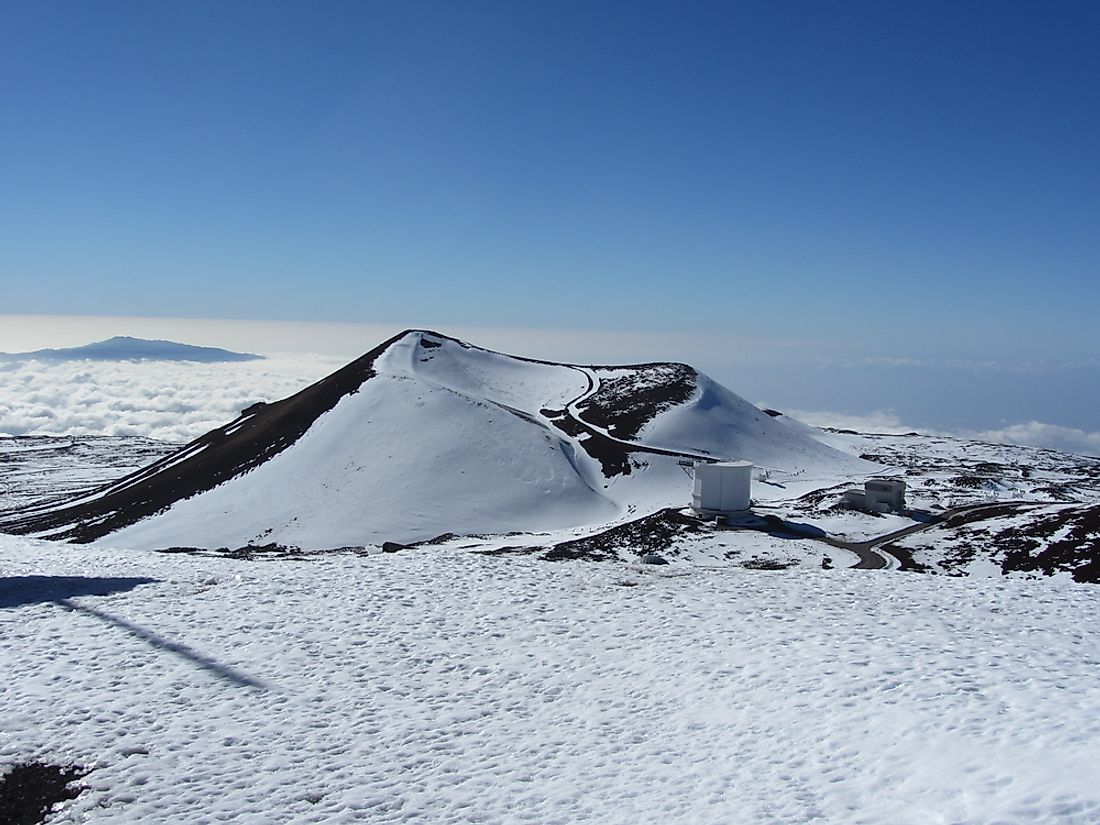Does It Snow In Hawaii?

Hawaii is a US state that is composed of a series of islands. Located in the Pacific Ocean, specifically in Oceania, Hawaii is the only state outside of North America. The state covers an area of 10,931 square miles and has a total population of 1,427,538. Although often associated with tropical climate, flawless beaches, and simmering volcanoes, certain parts of Hawaii do experience snowfall. However, snow is rare and does not occur in all regions of the state. In fact, some parts have not received snows in decades, and might not receive snow again in the near future.
Snow in Hawaii
Some parts of Hawaii receive snow. The islands experience nonseasonal snowstorms only at the summits of the state's three tallest volcanoes, which all have elevations greater than 10,000 feet: Mauna Kea, Mauna Loa, and Haleakala. During the winter, it rarely snows in areas of Hawaii that have an elevation below 9000 feet. The rest of the island sometimes experiences fog and mist during winter, but not snow. The summits of the three mountains may receive 2-8 inches of snow, along with icy roads and rain. This snow often remains on the ground for just a few days, and then quickly melts away. Sometimes snowstorms hit the peak of the three mountains, especially Mauna Kea, forcing officials to close the summit to the public. Snowfall is not only a common occurrence on Hawaii’s volcanic mountains, but it is expected each year. In fact, Mauna Kea means "White Mountain" because it is often covered in snow.
When Does It Snow in Hawaii?
Snowfall is common during the winter months on the three volcanic mountains of Hawaii. The winter months are part of the wet season in Hawaii, which runs from October to April. However, the winter season is considered to run from December to February. During these winter months, temperatures drop below 18 °C in areas of low elevation, and below the freezing point at the summit of the volcanic mountains. These low temperatures are accompanied by rainfall, snow, and fog. Sometimes the peak of Mauna Kea will receive snow even during summer or dry season, which runs from May to October. However, snow during the dry summer is very rare.
Why Does It Only Snow on the Mountains?
The mountaintops of Hawaii are colder than other parts of the state because the air pressure drops as elevation increases. Subsequently, the air at the summit of the mountains becomes less dense than the rest of the state. Additionally, the temperature at high elevations is low since heat from the ground does not reach the peaks. In fact, temperatures may reach or go below the freezing point, while there is also a minimum amount of moisture in the air. When tiny ice crystals stick together and form on the summit of the volcanic mountains, they can easily form snow. This snow can accumulate up to 8 inches. Other regions on the Big Island are close to sea level and experience slightly high temperatures and a lot of moisture in the air.











